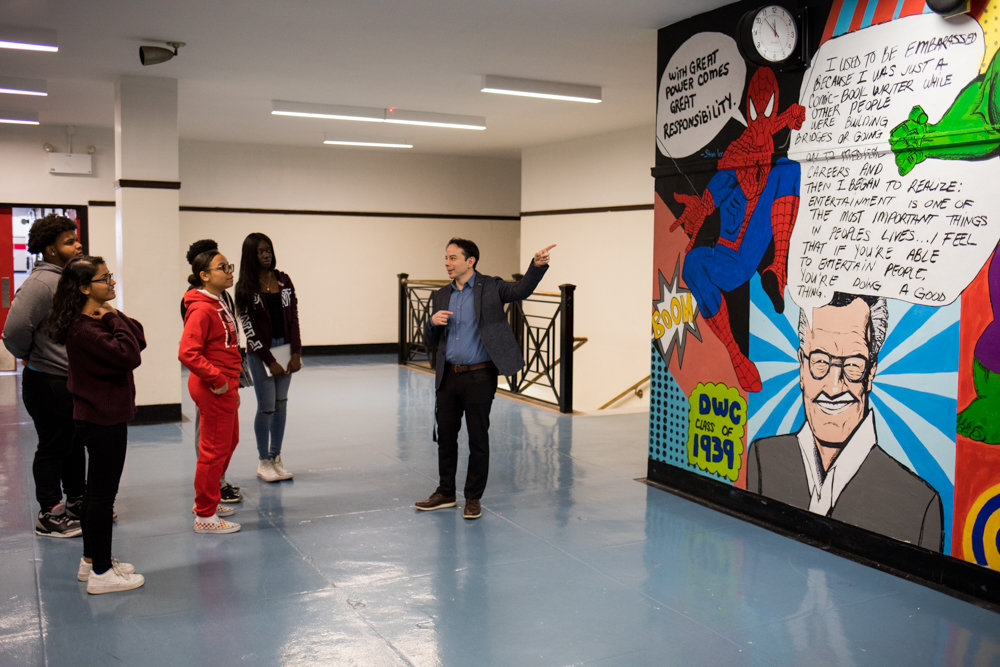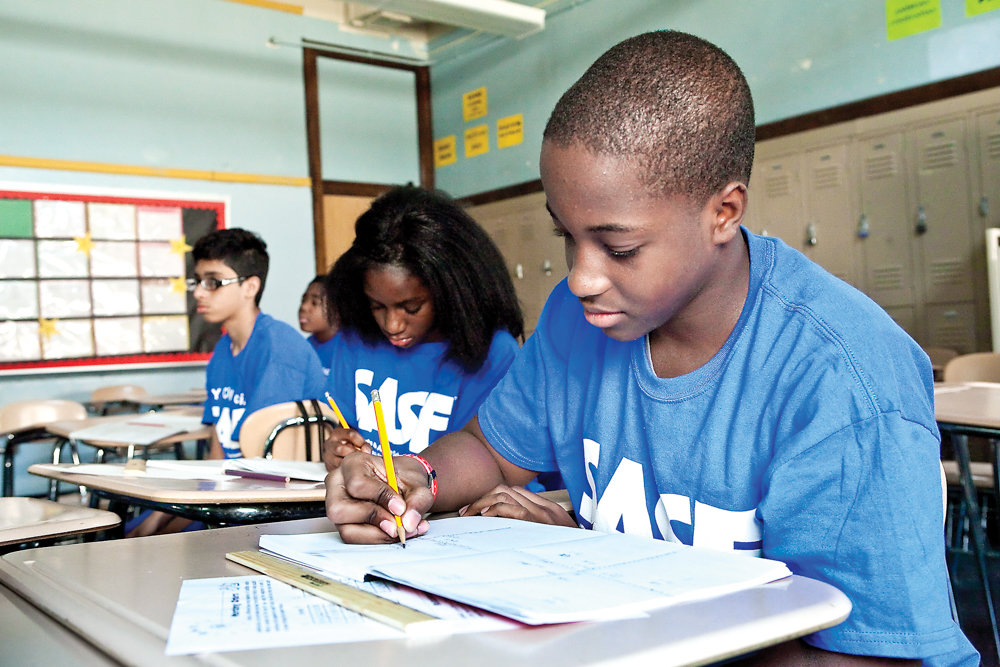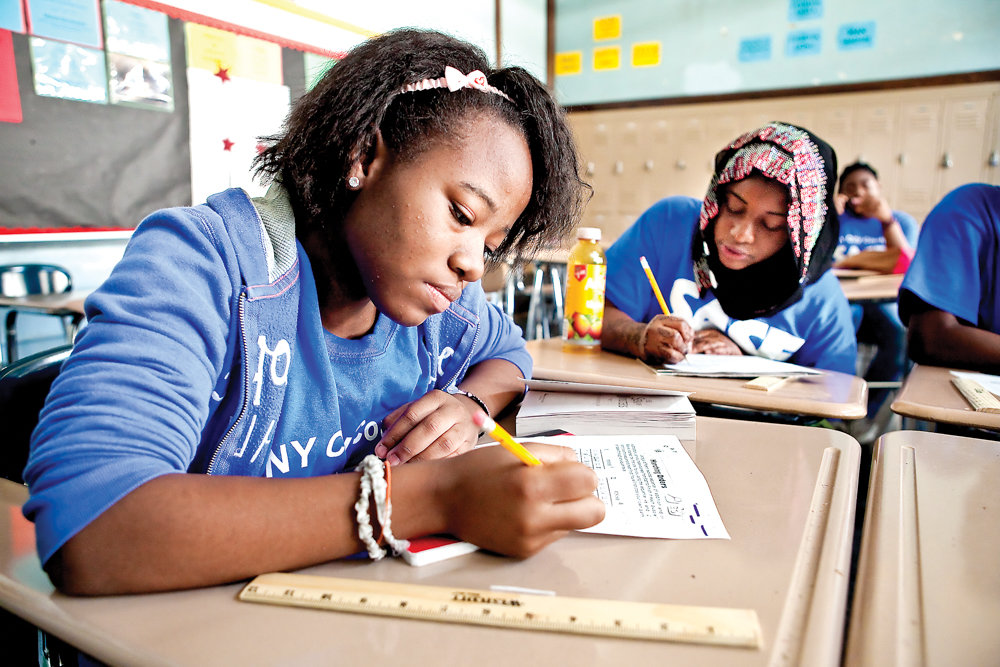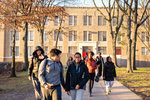Fourth school at Clinton threatens recovery, allies say
Plans to add a fourth school on the DeWitt Clinton High School campus have the historic institution’s alumni, parents and faculty worried the change will counter the academic strides the school had made in recent years.
Clinton has 670 available seats, according to the city’s education department. For them, that’s more than enough to bring in 150 students with significant instructional needs like cognitive delays and sensory impairment.
But while 150 students taking over available space for more than 600 might seem simple, it isn’t — at least for many of those already at the school. Their opposition to the plan already has pushed back a final vote to May 29. But that might not be enough for parents like Sidney Valerio to ultimately defeat it. Especially since, at least according to her, district officials are ignoring those in the community, and basing their conclusions on old statistics.
“What the local superintendent and the department of education sees is the data from two years ago, which isn’t reflective of the current growth patterns and successes we’re seeing at DeWitt Clinton today,” Valerio said. “What they’re doing is taking that snapshot that is old and thinking there’s plenty of space for another school to open up within the structure.”
Adding another school within that space takes up more than just 150 desks, Valerio said. It will need its own storage, administrative offices and common space to accommodate the new staff. Its space needs would mean an entire wing of the first floor would be sealed off from any other school’s use.
“The two other schools are on the third floor, and my daughter can’t even go up there to use the school library,” Valerio said. “The Clinton kids aren’t allowed up there.”
The proposed change would mean there is no more space for the elective classes that officials credit for the school’s recent success. The four-year engineering program, for instance, relies on having enough classroom space for its robotics and programming laboratories. The health professions course allowing students hands-on biomedical training is helped by its access to a Montefiore health clinic located at the school.
Continuing band, orchestra and art classes depend on having classroom space. Less room means administrators will likely need to cut the curriculum down to the bare bones and fill classrooms to capacity to accommodate students.
Bringing the new school to Clinton is to help meet demand for such a school in the district, education department spokesman Doug Cohen said, in a statement. District officials would continue listening to what parents and officials from the existing schools have to say about the plans, and try to address that as they go.
Enrollment at Clinton has grown in recent years, Valerio said. School officials have accepted some 400 incoming freshmen for the fall interested in the school’s new science and technology electives.
“My daughter has a full schedule of AP and honors classes,” she said. “She’s sitting in classes with 27 or 30 students. Classes are already reaching capacity, so how is it possible that another school altogether can come into that space?”
Parents and alumni would prefer to absorb as many students from the nearby overcrowded district into DeWitt Clinton as possible instead of creating a separate school. They see adding a fourth school as part of an ongoing campaign that threatens the high school.
“Up until a few years back, we were only one school,” said Gerald Pelisson, spokesman for Clinton’s alumni association. “And then the city decided it wanted to break up the big schools and formulated all kinds of tests and benchmarks that Clinton would not be able to pass, even though it had been doing very well.”
In 2008, the school graduation rate reached its lowest point — 42 percent. The education department threatened to close DeWitt Clinton in 2012.
The following year, the city divided the school, co-locating two other specialty schools — Bronx Collaborative High School and World View High School — within the campus and reducing DeWitt Clinton’s student population by 40 percent.
Each time the school seemed poised to throw off its troubles and rise again, Pelisson said, the city enacts new policies that undercut the school’s academic success.
“So always in the back of our mind is this crime that was committed where DeWitt Clinton was allowed to become collateral damage,” he said. “We were the last school to collapse in the Bronx. As all the other big schools closed, their most challenging students were sent to Clinton. Eventually we amassed a tremendous number of students with great difficulties. And of course, we were never given more resources to provide them the help they needed.”
But slowly — and with hard work by teachers, parents and alumni association — the embattled high school is beginning to excel again.
This year, school administrators expect a graduation rate as high as 80 percent.
Hard-earned gains are threatened if the new school increases class size on a campus that needs more individual attention, not less, Valerio said.
“My concern as a parent also is that you have a student body that is in a mental health space at home of not having a steady structure to call a safe haven,” Valerio said. “This proposal is just triggering another situation where a space they feel is safe and stable is in danger of being taken away.”
Concerned community members will continue presenting their worries to elected officials in hopes members of the education department committee votes for what’s best for students at its May 29 meeting.
“We just hope the school system finally listens to us,” Valerio said.















